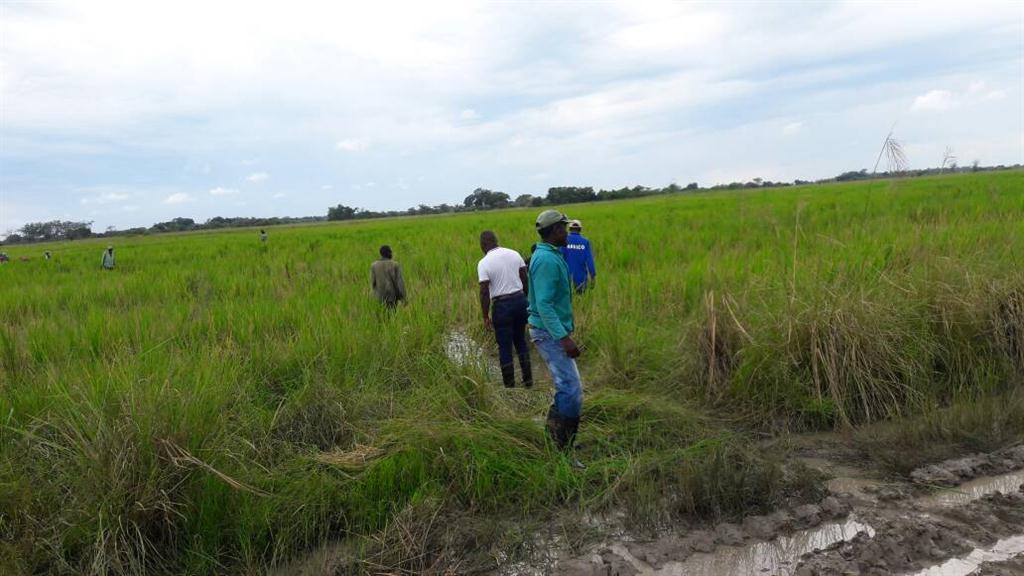Kalimbeza rice project in Zambezi flooded
The region fears this year's harvest will be smaller than those of the previous two years.
The Kalimbeza Rice Project in the Zambezi Region is under water after recent heavy rains, forcing the project to resort to manual harvesting.
Farm manager Dion Simataa said the mechanical harvesters cannot be used in water and mud, hence their decision to hire casual workers to harvest the rice.
Zambezi Governor Lawrence Sampofu said 40 casual workers have been hired to harvest the rice.
They are paid N$60 per day, which will ultimately be more expensive than using a harvester, but it is the only way to harvest the rice before it spoils, he said.
“Once it is submerged, the colour of the rice will change from white to black and it will not be fit for consumption,” Sampofu explained.
Simataa said the casual workers have so far covered 22 hectares out of the 47 hectares that can be accessed.
The water levels on the rest of the farm are still above one metre, which is too high for manual harvesting.
After harvesting, the rice will be dried and thrashed before being sorted, which is also done manually because of a challenge with the sorting machine.
Simataa said he is concerned that the harvest will be smaller than in the previous two years because of the flooding.
He however said they can still depend on the long grain variety of rice known as Supa, which can withstand floods and which was transplanted in December and January.
“The higher the level of the floods, the higher it grows,” he explained.
The only challenge is that it will only be ready for harvesting in June, when the flood waters might still not have subsided. The fear is that the rice will fall into the water and spoil.
Kalimbeza is situated about 22 kilometres east of Katima Mulilo. - Nampa
Farm manager Dion Simataa said the mechanical harvesters cannot be used in water and mud, hence their decision to hire casual workers to harvest the rice.
Zambezi Governor Lawrence Sampofu said 40 casual workers have been hired to harvest the rice.
They are paid N$60 per day, which will ultimately be more expensive than using a harvester, but it is the only way to harvest the rice before it spoils, he said.
“Once it is submerged, the colour of the rice will change from white to black and it will not be fit for consumption,” Sampofu explained.
Simataa said the casual workers have so far covered 22 hectares out of the 47 hectares that can be accessed.
The water levels on the rest of the farm are still above one metre, which is too high for manual harvesting.
After harvesting, the rice will be dried and thrashed before being sorted, which is also done manually because of a challenge with the sorting machine.
Simataa said he is concerned that the harvest will be smaller than in the previous two years because of the flooding.
He however said they can still depend on the long grain variety of rice known as Supa, which can withstand floods and which was transplanted in December and January.
“The higher the level of the floods, the higher it grows,” he explained.
The only challenge is that it will only be ready for harvesting in June, when the flood waters might still not have subsided. The fear is that the rice will fall into the water and spoil.
Kalimbeza is situated about 22 kilometres east of Katima Mulilo. - Nampa





Comments
Namibian Sun
No comments have been left on this article